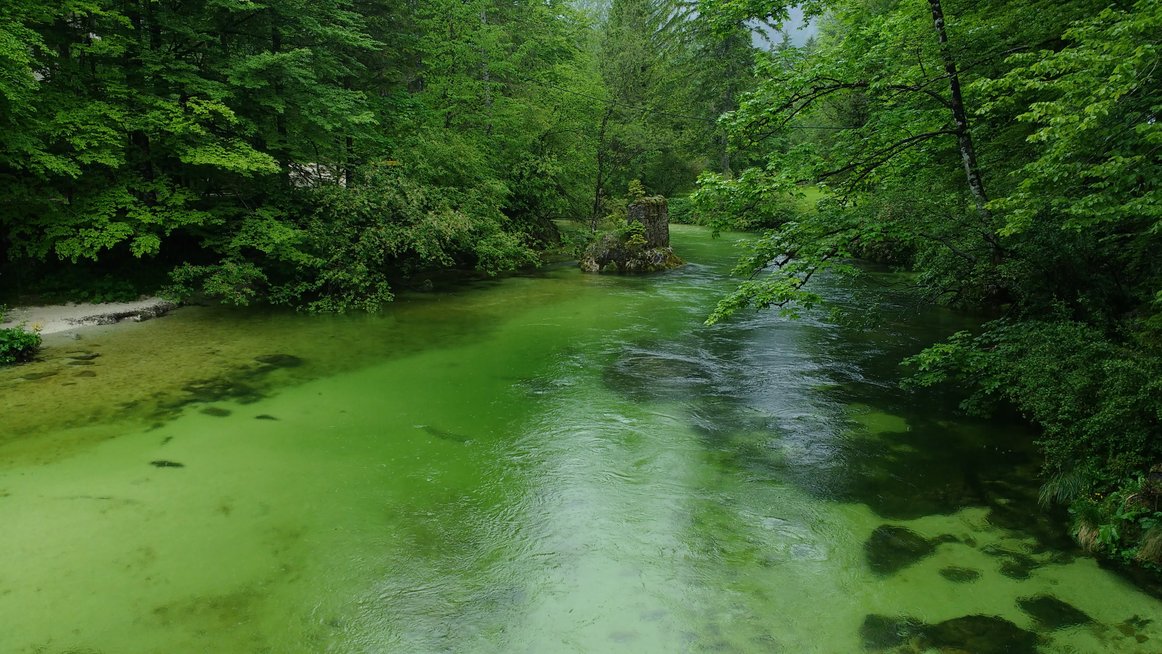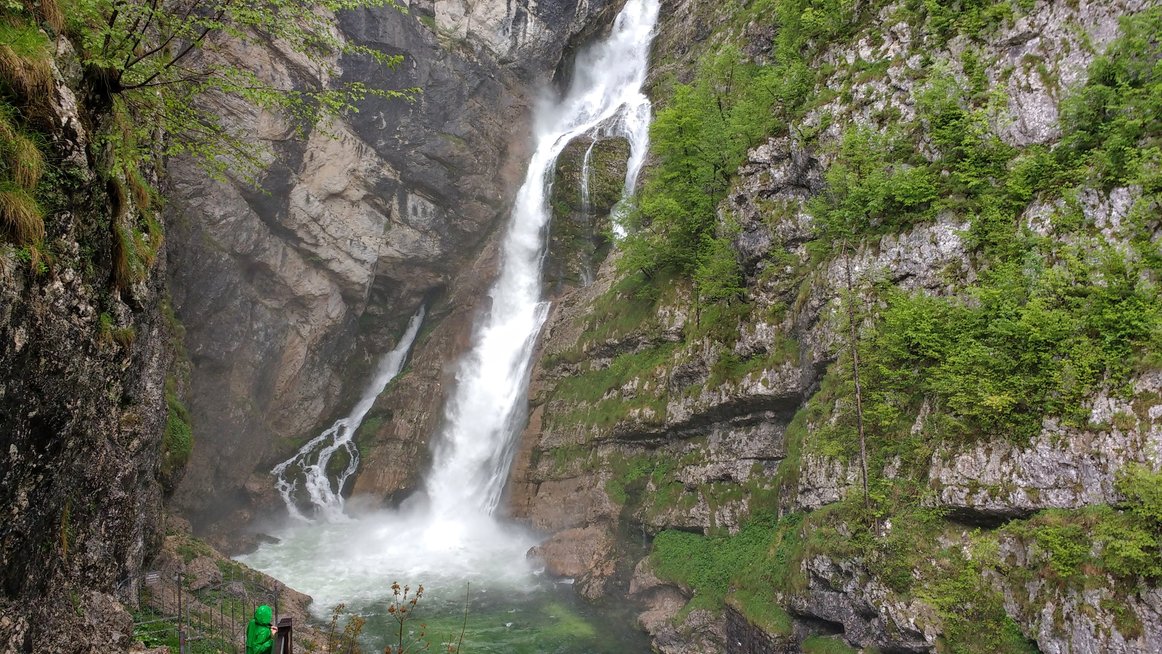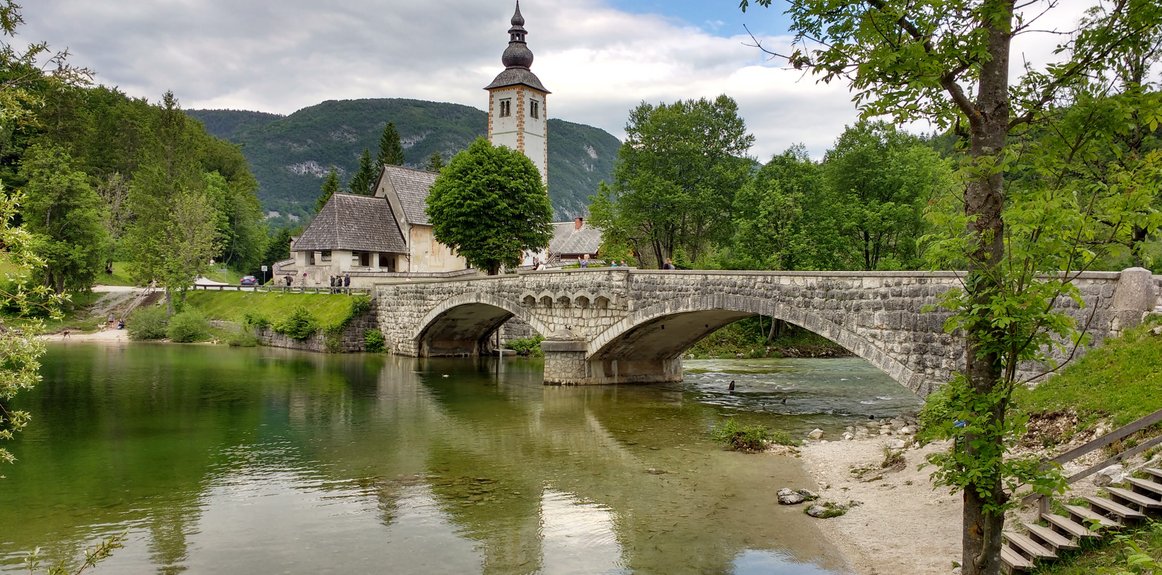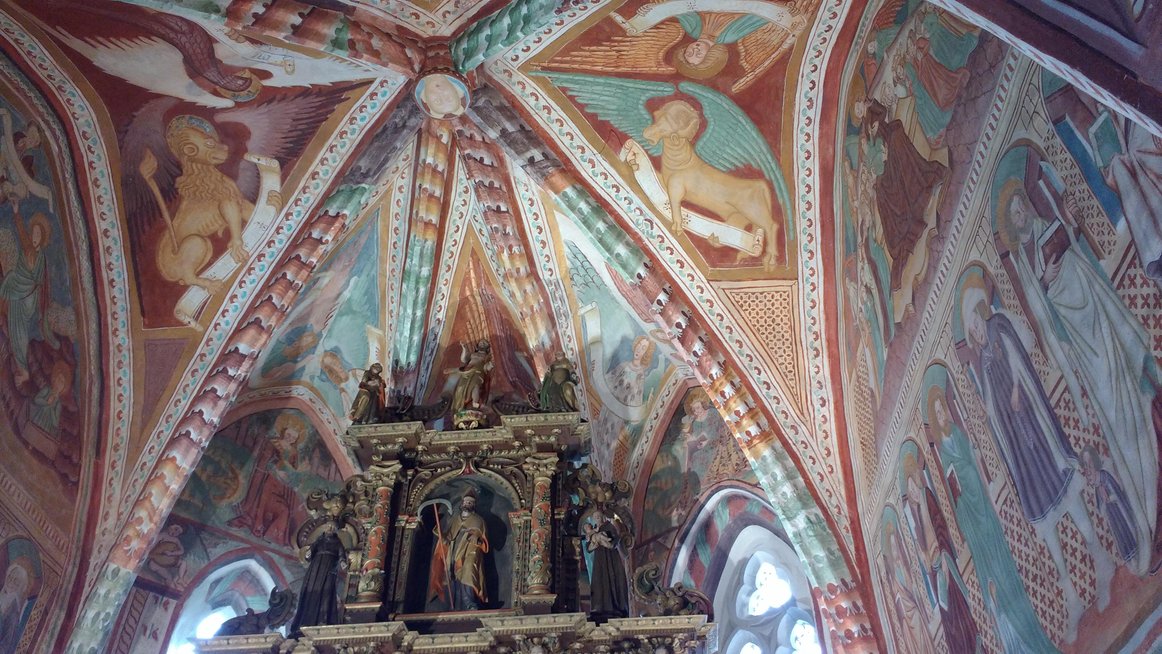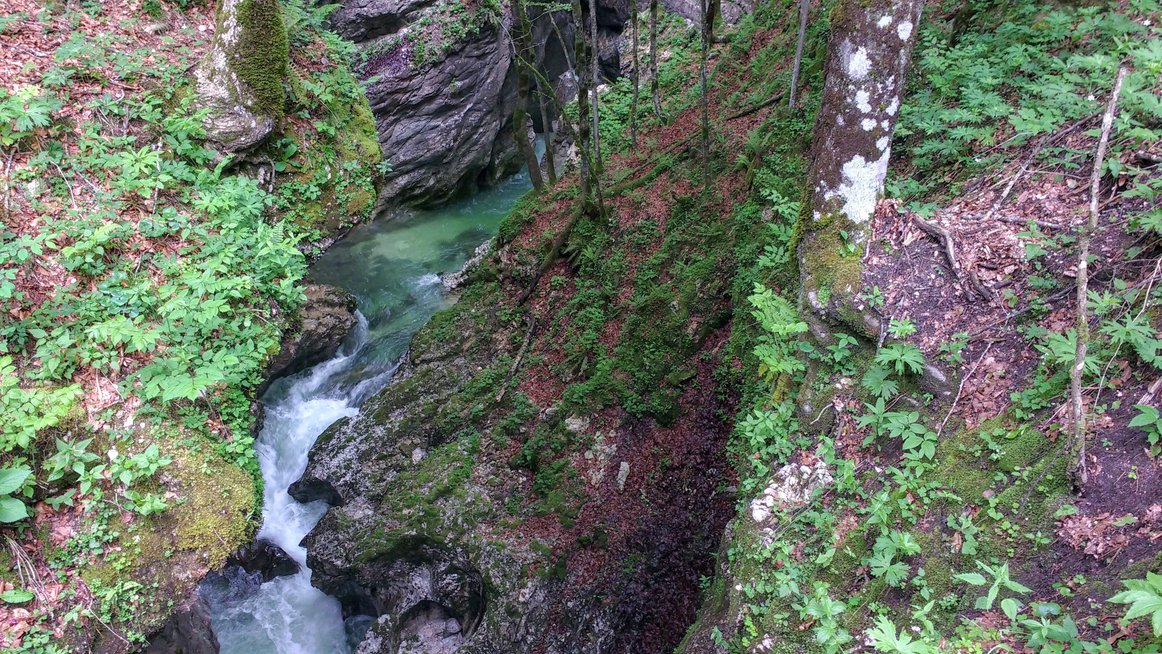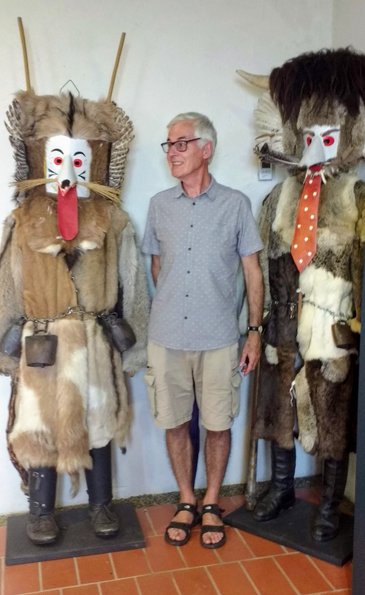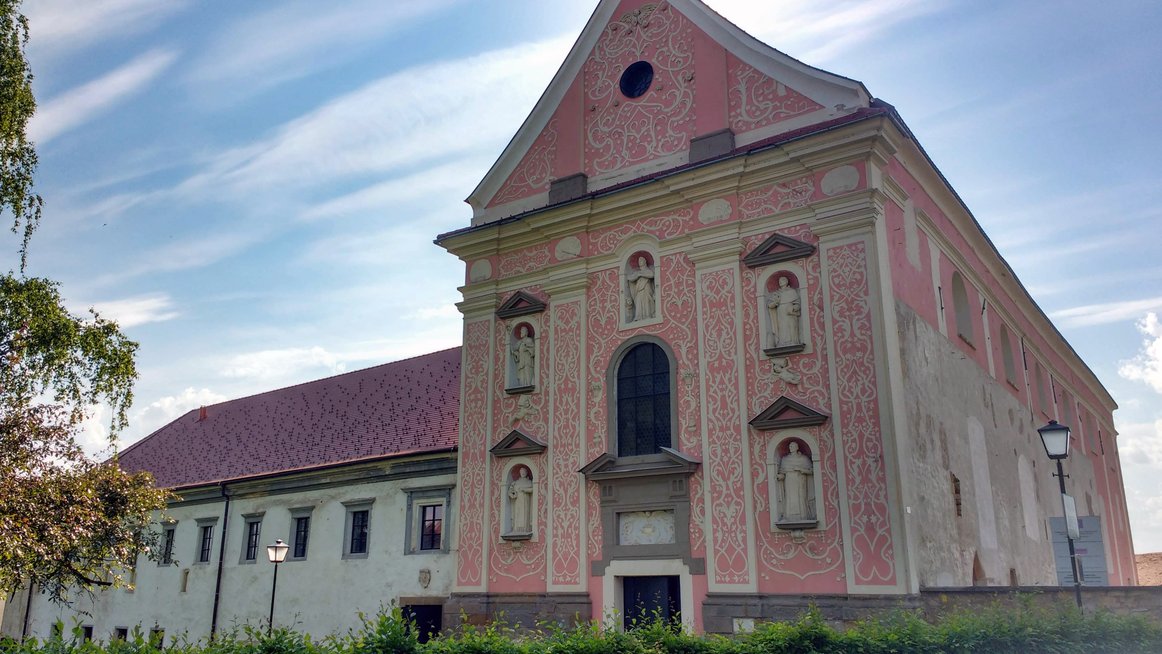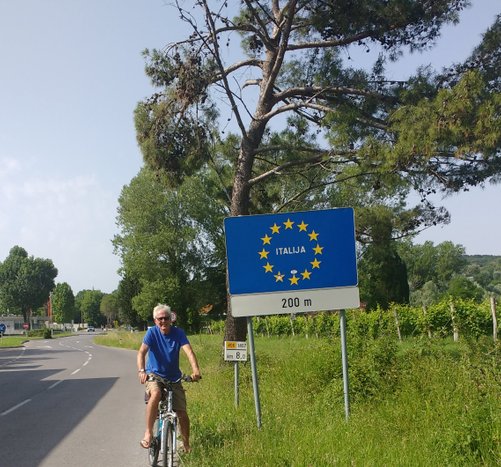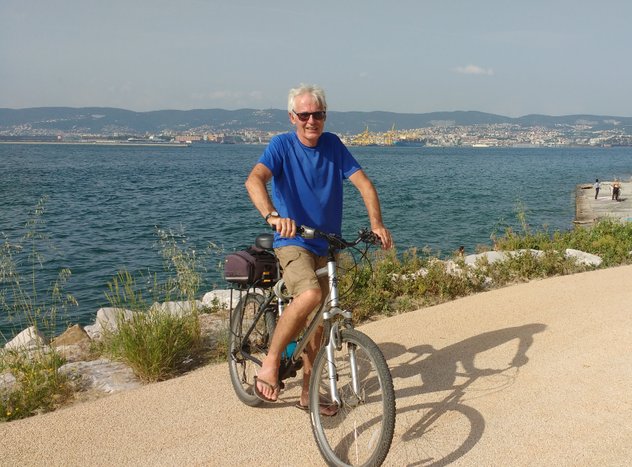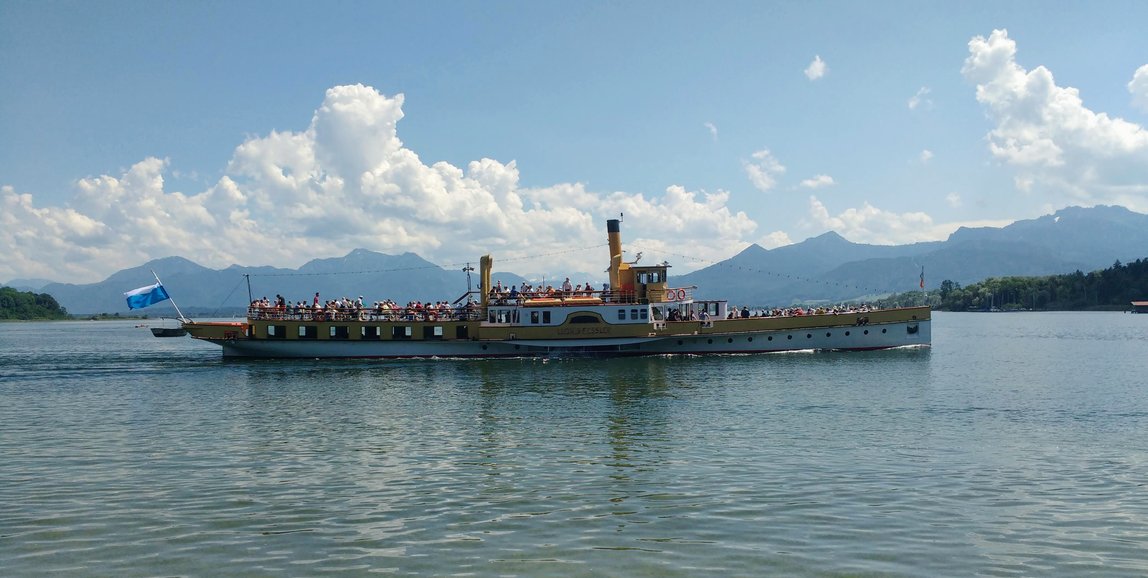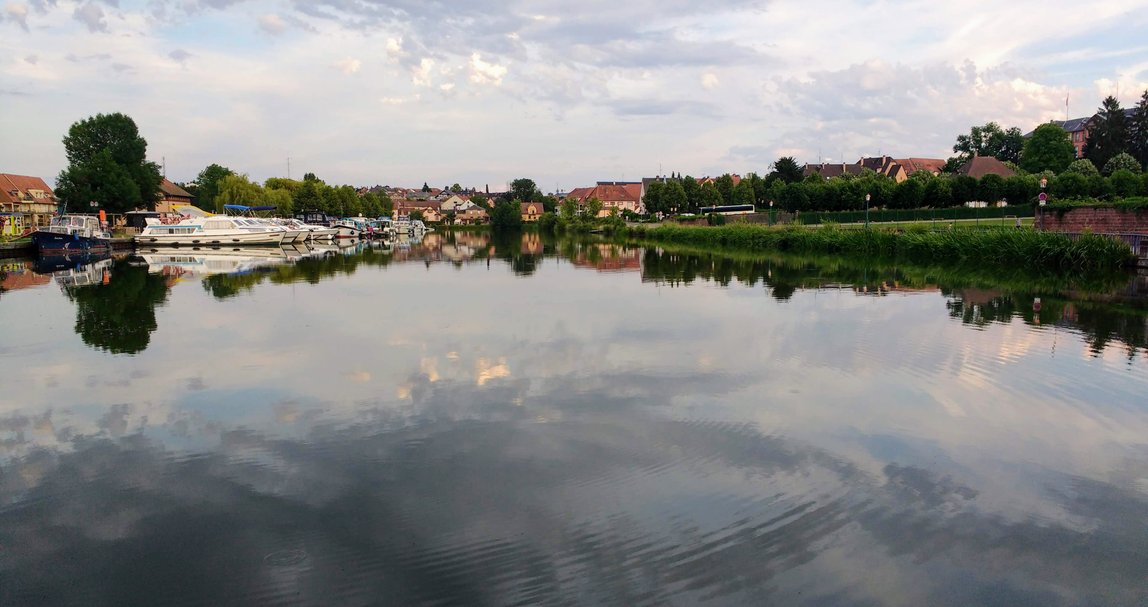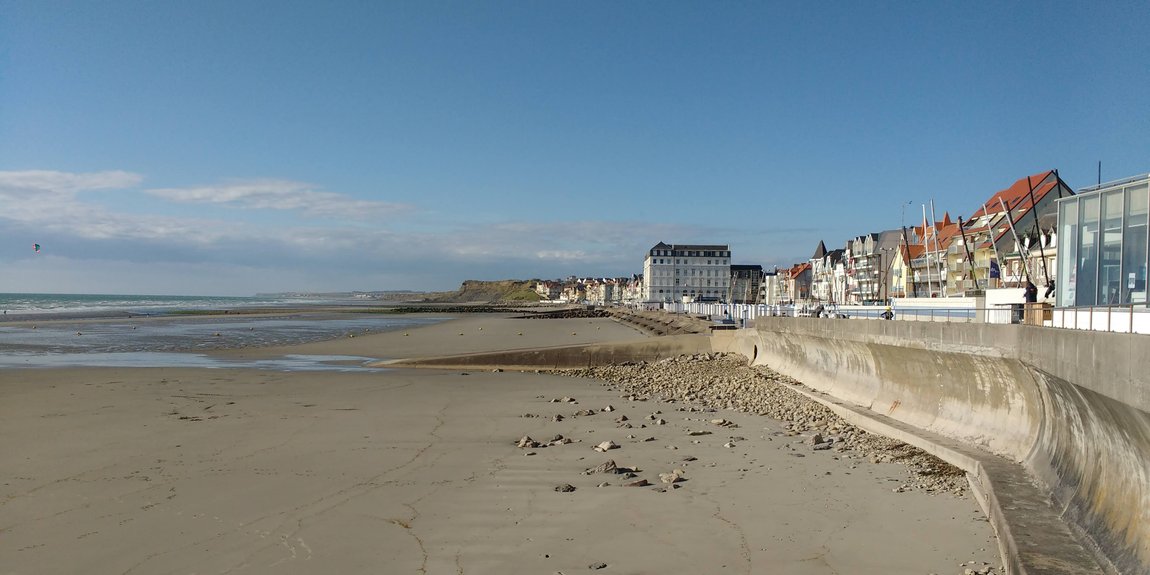Motorhometrips
with tips for cycling & hiking
Slovenia
The advantage of stopping of at Lienz, was not only had the weather improved but it was a shorter hop into Slovenia. Regarding the weather, we have to get this into perspective, we are talking damp rather than rain but definitely not wall to wall sunshine.
The other factor to prepare for was this was another border and another motorway vignette and the 30 day version at 30€ was the only option for us, though you can get one for a week.
Vignettes are available at the border and petrol stations and do not be tempted not to purchase one as penalties are very high.
Unfortunately, as in Austria, if you are over 3.5 tonnes you will need to use an electronic system.
This, however, was a definite improvement over our last visit to Slovenia in the late 1970’s,when it was part of Yugoslavia, on an overland camping trip to Istanbul; then motorways were in short supply and my abiding memory was one of fear, as German drivers still wanted to do autobahn speeds on a two lane road. The roadside seemed to be literally adorned with fallen over and abandoned vehicles. Nowadays the motorways are firstclass as are the majority of other highways.
Lake Bled
Bled is very touristy, with bus loads of day trippers but don’t let this put you off, it is stunningly beautiful, even on an overcast day. We stayed at Camping Bled, right on the lake, which made a half day whistle stop tour possible. In fact a half day is all you need for Bled to walk around the island and to visit the castle, the latter is to be highly recommended.
We missed the other tourist treat, a boat over to the island.
The reception at Camping Bled was superb and in fact we couldn’t find the Slovenian people more friendly and helpful, wherever we went. The site has all the facilities that you would expect from a large site.
In advance I confess that we returned to Bled on a sunny day and had hoped to spend another night at Camping Bled but what a difference a sunny day and a weekend makes, there was no room at the inn. I was not necessarily surprised at this,as Lake Bled gets very busy at weekends and this one was no exception. The number of tour buses was staggering and this was early in the morning, demonstrating fully Bled's reputation as a honey tourist trap. Two circuits of the lake, one which was inadvertent, we had seen the lake in its full sunny splendour and now was the time to head off to the capital Ljubljana. As we were leaving, the traffic coming off the motorway stretched back nearly all the way to the junction, Bled was in for a busy day.
Lake Bohinj
Everybody I have spoken to said you will love Lake Bohinj and how much more preferable it is to Bled and I can understand why. Though Bohinj is still popular it is not on the tourist circuit, as is Bled and consequently you tend not to get the hordes of coach tourists. Also Bohinj has a more natural feel to it, as you walk round the non road side you will actually experience mud on the track much, however, to the annoyance of a fellow Brit tourist, who was quite aggrieved that it was not paved all the way.
We stayed at Camp Zlatorog, named after the beer or was the beer named after the site? It is a lakeside location, at the far end of the lake and life is very relaxed here, pitch where you like and how you like. I would imagine that British club site reps would be having nightmares but this relaxed way of living is the charm of continental touring and what would the British Club sites make of someone turning up at 9.00 in the morning? The other joy of continental touring is that you do not have to say how long you will stay, nor do you have to pay until you leave.
There are a couple of easy walking excursions from the site. The first is the walk up to the waterfall Savica Slap, where there is a modest charge, and the trip can be punctuated by pancakes and coffee at the excellent restaurant, just below the entry kiosk.(Just under 7 miles)
You turn right outside of the site and take the road, passing an excellent restaurant Ukanc. You continue and cross the river Sava Bohinjka which has an amazing green colour.
You follow the road until you come to a track on your left, signposted to Savica Slap
The other walk involves a circuit of the lake with a detour to the Mostinica gorge, just above the village of Stara Fuzina. We took the route left from the site, clockwise, as this is the more natural path as the return journey involves following the road, albeit on a separate path.
Before attempting the walk to the gorge we took lunch at the Hotel Jerez, a very pleasant location, overlooking the bridge and providing a very acceptable lunch. An alternative is to lunch at restaurant Kramer, with its lakeside location, just before hitting the town but sadly all the outside tables were occupied.
Before hiking to the gorge you must, however, visit the church, just over the bridge and the modest charge is well worth it to see some absolutely superb frescoes. The young lady at the cash desk, took time out, to give us a mini guide of the church. This walk once you complete the lake circuit is about 12. 5 miles but you can short cut the route by taking the boat in either direction, to cross the lake.
If you want to do another grockle trip then catch the cable car up to Vogel, literally just outside of the campsite.
The campsite has good clean facilities together with a motorhome service point and there is additionally a restaurant serving basic food plus bread and coffee in the morning, with a large covered area, ideal if you are in a tent.
There is a good pizza restaurant, within walking distance of the site.
Ljubljana
No visit to Slovenia would be complete without a trip to the capital and the good news is that it can be experienced within an easy half day excursion with ease of access provided by Ljubljana Resort Camping.
The facilities in the resort are somewhat dated but they do the job and there is a motorhome service point. Moreover, the staff are incredibly efficient and helpful, fully geared up to making your visit to the capital easy and enjoyable. There is a 10 minute bus service for the 3 mile trip into town and the resort will provide you with the smart card needed for the buses.
The old town is extremely pleasant to wander, with its obligatory hilltop castle fortress, which you can access by funicular or by a somewhat short but steep walk. It has its own river, narrow medieval streets and even some Roman remains.
Roman Ljubljana
The remains are not extensive but they are worth a visit.
Ptuj
Is allegedly the oldest town in Slovenia and certainly with its narrow medieval streets you could easily be transported back a few hundred years. It is a really quiet town situated on the banks of the river Drava and dominated by its magnificent castle.
The receptionist at the camping said that you must not miss a visit to the castle and she was not wrong, for a modest fee you can spend a very interesting afternoon. The castle had a superb display of old musical instruments, including a Roman flute as well as an exhibition of costumes that are used in the carnivals they have in the region.
It is an easy walk into town, less than a mile and a good proportion of it follows the river before you cross the bridge and enter the town.
There's a great cafe in the grounds and having a coffee surrounded by the castle with hardly anyone else in the grounds was surreal but immensely pleasurable.
The Kurent or Korant Carnival
is a ten-day-long carnival in the spring, and the Kurent is a figure dressed in sheep skin who goes about the town wearing masks, a long red tongue, cow bells, and multi-colored ribbons on the head.
There are variations on the Kurents, depending on what village you come from and the exhibition in the castle has a wide selection of the differing costumes.
Organized in groups, Kurents go through the town, from house to house, making noise with their bells and wooden sticks, to symbolically scare off evil spirits and the winter and welcome in the spring.
According to legend Kurent is a demon who chases winter away and calls spring into the country.
The Dominican Monastery outside the castle walls dates back to the 13th century . It doubles as a cultural centre but is possible to undertake an audio tour of the building which though quite good is perhaps a bit long , probably more suitable for Slovenes than English tourists.
Ptuj is also a spa town and the thermal baths are right next to the campsite and can be accessed for a modest fee. The campsite is actually attached to the 4 star hotel next door and it is the first campsite where I have checked in at a four star hotel. Normally with Acsi the fees are reasonable, en par with the Aire, also attached to the hotel but this week was a school holiday so it cost a bit more but the fees had to be paid as it was wash day . They did give a 10% discount.
What was excellent value was the 15€ evening buffet, eat as much as you like and good quality, it was just too good to miss.
There is some good cycling in the area and we did a simple cycle around the lake, which is an artificial lake in the river but more ambitious cycling routes to Maribor in one direction and Ormoz on the Croatian border can be followed by picking up a fully detailed map at the tourist office.
Just outside of town towards Lake Ptuj there is a very attractive aire, in easy cycling distance of town and when we visited it was completely empty.
At this stage we took the motorway into Croatia to Skradin and the Kyrka National Park before going on to the Paklenica National Park taking the coastal road.
After Paklenica we followed the Adriatic Coast to Senj, onwards to Medveja and then to Pula on the Istrian Coast, before crossing back into Slovenia.
Ankaran
This was our final stop on the Istrian coast. Rovinj is the must see but as we were approaching the main season, campsites were starting to charge silly prices for a one night stay, 55 to 70€. We therefore plumped for Ankaran as it was a stone’s throw from our final destination of Nova Gorica.
We stayed at Camping Adria which is a massive site and again coastal pitches were at a premium price and as is the norm you would have to get on with your neighbours. We took an ACSI rated site, away from the crowds and we had plenty of room and more importantly, plenty of shade.
The site has a coastal location, though you will have views of the port of Koper and it has a very acceptable restaurant with coastal views, together with another cafe and a superb swimming pool. This is very much the holiday resort. There is an attached hotel, where we had a very acceptable buffet evening meal at a reasonable 18€ per head. There are also holiday apartments.
We amused ourselves by taking a cycle ride into Italy. It is somewhat surreal to cross the old border crossing. I can recall a road trip to Turkey in the 1970’s and border crossings were never this easy. You have to be patient with the reasonably steady climb on the not too busy road before you descend to a super bay, before crossing the border and then following a glorious coastal route, through to Muggia, with views over to Trieste.
Ankaran is not a place I would rush back to, it was pleasant enough and the cycle ride was good fun but its proximity to Koper does detract.
Nova Gorica
Our ultimate destination was Camping Lijak at Ozeljan, some 10km from our final destination of Gorizia for our family wedding. The campsite is in a pleasant rural setting, surrounded by hills and has good facilities and the motorhome service point is being upgraded, though in reality for us it was to be used as a car park. I think we were the first ever to book a 4 night stay but never to have actually occupied our motorhome for the period.
There is a nice café, restaurant with an outdoor veranda attached to the site and the owners could not have been more obliging.
Before we arrived, however, a detour to the Caves at Scojanske was in order.
There are two major cave systems in Slovenia, Postojna and Scojanske.Both are classical limestone cave systems, complete with stalagmites, stalactites, pillars, curtains and underground rivers.
Julia is not keen on caves so the compromise is that we would go to Postojna where you ride on a train to see the major sites. So we arrived at the caves, courtesy of a detour, bought our tickets, walked down to the cave entrance, ready for the start of the tour. As the preliminary introduction started, reference was made to walking. I looked up to the descriptive boards at the entrance, we had arrived at Scojanske.
What followed was truly amazing, a 3km two hour tour of the most awesome karst scenery which totally dwarfs Wookey Hole and Cheddar. It is impossible to describe the grandeur and scale of this cave system, it has to be seen to be believed. It is not UNESCO protected without reason, the finest example of underground limestone geology.
At the end of the tour, you can return by lift to the carpark or take a 30 minute climb through the gorge up to the carpark. Though this involves a bit of effort, it is to be recommended.
There was ample parking for motorhomes, though we were still in the low season. The cave interior is fairly chilly but to be honest it was a welcome relief from the heat outside. I was in shorts and t shirt for most of the tour but added a fleece towards the end. There are the odd drips of water.
Julia by the way found it awe inspiring and the least claustrophobic you can imagine, it is so big and they didn’t do the classical party trick of turning the lights out.
You are not allowed to take photographs in the caves but the reality is that the camera would not capture the grandeur of the caves so click on the link below.
Gorizia
This is somewhat cheating on a motorhome trip as we spent 4 nights in a Best Western but I must confess, the air conditioning was most welcome. As normal when you trade in your motorhome for a bedroom, it takes a little while to adapt to the space and it presents the problems of finding stuff. A motorhome is more compact and everything has its place.
Gorizia is a very pleasant town and unsurprisingly it doesn’t feel very touristy. It has some excellent eateries and bars and surprisingly for Italy very reasonably priced
Highlights of the town are the castle, sympathetically restored after the first world war, when it suffered considerable damage and the palace and a number of pleasant piazzas. There is an excellent taverna on the right hand side as you leave the castle.
Gorizia was on the frontline in the first world war and received considerable bomb damage. It was also a significant area of dispute between Italy and Yugoslavia after world war two with the old town Stara Gorica or Gorizia remaining in Italy and the new twin town of Nova Gorica, growing up after 1947.
At one stage the border went through Transalpina Square and crossing the border was prohibited but with the dissolution of the old Yugoslavia, the emergence of Slovenia as a separate state and its accession to the European Union, this is now all in the past and passage is seamless.
After effectively three days of wedding celebrations with the family, it was time to hit the road. It had been a great wedding, a fusion of Italian and English traditions, though I am not sure what they made of the speeches. Apparently this is not an Italian tradition though dancing was and high energy dancing it was, led by the Italian boys, friends of the groom. It tended to be fairly one dimensional with the exception of one group dance, which had elements of choreography attached to it and it was definitely their party piece as it featured throughout the evening, the Italian answer to the Macarana. The boys in stereotypical Italian style thought they were the answer to Diversity, even after a dance off with the girlfriends of the bride, who were all professional dancers, they thought they were the winners. I think this was on the basis that they made more noise but it doesn’t take much imagination to see who were declared the top dancers.
One of the highlights for us was that our two year old granddaughter Joni was a flower girl, a role she performed meticulously, ably supported by head bridesmaid Louise.
The Wedding Cake Mishap
The other role that we had to perform was to transport an iced fruit cake from England in our camper and it fitted ideally in our oven, which we rarely use, particularly on continental journeys, other than on the odd occasion, that you might want to warm up a croissant. The cake had been made by the bride's gran so it had important sentimental value and the fact that her cakes were delicious. We proudly, safely delivered the cake. On the wedding night we expectedly waited as it took pride of place against the official wedding cake. When it came to the time to cut the cake, the icing had set like concrete, probably due to the excessive heat in the motorhome. The waiters when they tried to cut the cake, thought that this was some bizarre English wedding tradition. No matter, how hard they tried, they could not cut through this cake and in the end they had to resort to turning the cake upside down and scooping it out from the icing. Apparently it was delicious but despite all our efforts in the successful transport, we somehow missed out on a taster.
That was the only mishap in the evening’s catering which otherwise was superb. The food and wines were exceptional and what was a great Italian tradition was the fact that the canapés, meats and cheeses at the initial reception together with the main wedding feast was spread out over the evening with various entertainment throughout. It led to a great fun evening.
Chiemsee
From Nova Gorica, we took the motorway to Ljubljana then the motorway to the Karawanken Tunnel, fee payable and crossed into Austria and then onwards to Salzburg, after buying the obligatory vignette.
We had a vague idea that Chiemsee could be a stopover and after a good run through Slovenia and Austria, and with only a hold up at the border where they appeared to be doing random checks on HGV's with its associated traffic jam, we had a good run.
The only site which had an ACSI rate had no vacancies so we plumped for the site next door, Chiemsee Strand Camping, which not only had a pitch available, the last one, but it was an ACSI rate. The campsite has good facilities and a motorhome service point.
Chiemsee is very popular with the Germans and hardly surprising, it is a beautiful spot and we were blessed with gorgeous weather. As we were now getting close to the peak holiday season, the campsites were getting very busy and as we found before in German sites at peak holiday periods, you will have to get on with your neighbours, no 6 metre rule here.
Cycling
At check in I asked if you could cycle all the way around the lake and how far it was. The answer was in the affirmative and it was 60 km, which sounds a lot but in miles is under 38, so doable for a day’s cycling with coffee and lunch stops. So that was the challenge for the next day.
We would suggest that you tackle the route anti clockwise, that is turn left out of the campsite and you want to head for Prien. The campsite will give you a very acceptable map. The reason for going anti clockwise is that this first part to Prien, follows the lake more closely, so this is the most picturesque part of the ride.
Also the cycle route will try and take you away from the lake, so you have to use your common sense and make sure you keep to the lakeside paths. You will see signs that say 'Radfahrer Absteigen' which means cyclists should walk but here I think it is a case of using your common sense, pedestrians have priority and if there are lots of them then get off your bike. Paths which are for walkers only are clearly marked and you do not have to know any German to know that this is the case.
The other word of warning is that mosquitoes are rampant and they have voracious appetites and in the wooded sections they appear to be out all day. I had the misfortune to get caught in the woods because the chain came off Julia's bike and they literally descended on me in swarms for a ready meal. I had never put the chain back on so quickly or cycled out of there so fast. Insect repellent is a must though I did not see that the locals were so troubled, even those that were sunbathing or went swimming, so either they are immune or whinge less than me.
As well as being extremely beautiful with its Alpine backdrop, the lake has numerous cafés and restaurants for kafe and kuchen or for a full meal. Interestingly but rather surprisingly was that freshwater fish was rarely to be seen on menus. We availed ourselves of Eis Kaffee and the obligatory apple strudl, the former was interesting as it was more like a large Italian affogato with cream on top. For lunch we decided to have a lakeside picnic, there are numerous tables and benches. This area is geared up to the outside tourist.
The other top tourist attraction is the Schloss Herrenchiemsee on Herreninsel, a lavish affair, which aimed to match Versailles, built by King Ludwig. Boats will run from Prien and in the main season from Chieming as well. So if you want something less energetic then this is a good option. It is also possible to visit the other islands of Fraueninsel and Krautinsel.
There is also a bus service around the island and the campsite will provide you with a free travel pass. Interestingly the bus tows a trailer, whereby with a small extra charge you can place your bike.
Chieming is a pleasant enough town with a small but well stocked quality supermarket, though not Aldi prices. There is also a petrol station which is a good place to top up, as it is cheaper than on the motorway. There are also a couple of restaurants.
Saverne
On leaving Chiemsee, the plan was to follow a similiar route back through Germany, by pass Munich, on towards Stuggart, to Karlsruhe, via Pforzheim, before following the Rhine down to Offenburg and then crossing into France, towards Strasbourg.
I must confess, driving through Germany on the autobahns is not pleasurable. The traffic is heavy and though we faced few holdups there was little opportunity to use cruise control.
We toyed with the idea of stopping over in Strasbourg, as we hadn’t visited the city for some time but in stead we chose to stop at Saverne, as this was only an overnighter with a planned restaurant meal. We had cycled to Saverne from Lutzelbourg on the way down and we were impressed with this picturesque Alsacien town and we fancied some local cuisine.
We stayed in the local campsite, a good mile outside of town but nevertheless an easy walk in. I had forgotten that there was an aire next to the marina, which would have saved us a walk but it was a pleasant stroll into town and after a day’s driving, it was nice to stretch your legs.
We eat in the Taverne Katz in the Grand Rue which has a great atmosphere in the restaurant but this was a warm summer evening, so we sat outside on the pleasant terrace, overlooking the pedestrianised street. The service was excellent and the food very tasty. Alsacien food as an apt description, could be described as relatively robust, plentiful but perhaps lacking a degree of delicacy but if you want a good feed then you will not be disappointed. It was, perhaps a little expensive. The Riesling, however, went down very well.
When we first went to France in the 1980’s, the food was a revelation. The French bistros produced food at a quality and price simply unparrelled with anything that you could typically get in the UK at the time. Since then, however, the UK has upped it’s game and the quality of food from pubs to restaurants has improved dramatically, whereas one gets the impression that time has stood still in France but whisper that quietly.
Wimereux
The drive the next day, though long was relatively relaxed as French motorways, outside of August are relatively lightly trafficked so cruise control comes into its own but as previously stated they are very expensive.
Though it would have been possible to cross the channel the same day we would have met with rush hour traffic on the M25 when it tends to resemble one large car park. So the plan was to overnight in France, which would be cheaper anyway than an overnight stay in England and get an early ferry the following morning .
A perennial favourite came to mind, the municipal campsite at Wimereux, as it is a pleasant seaside town with cliff walks and easy to pick up supplies. We were going to eat out but in the end we picked up a cooked chicken form the local boucherie, salad from the greengrocer, the obligatory bottle of wine from a local merchant and of course the visit to the patisserie. As far as motorhomes are concerned, the French have got it right with their municipal campsites and aires within walking distance of town centres.
The campsite was busier than we had experienced previously and when I said do I pitch anywhere, the answer was no, numbered pitch given. The sanitary block has even been given a mini makeover.
The next day plan did not work out quite as anticipated, our early morning ferry was cancelled but the positive news was that we were able to settle down at the port and enjoy breakfast, rather than the offerings provided on the boat. So there we were sitting very smugly, tucking into our breakfast whilst the rest of our travellers were waiting patiently by their vehicles but at least it was sunny. The other part of the plan didn’t work out either, that is to arrive reasonably early at Dover and avoid the worst of the M25.
With hindsight, we should have stayed an extra day at Wimereux and come back on the Saturday but these little last minute hic ups didn’t take the gloss off, of what was an excellent trip.




